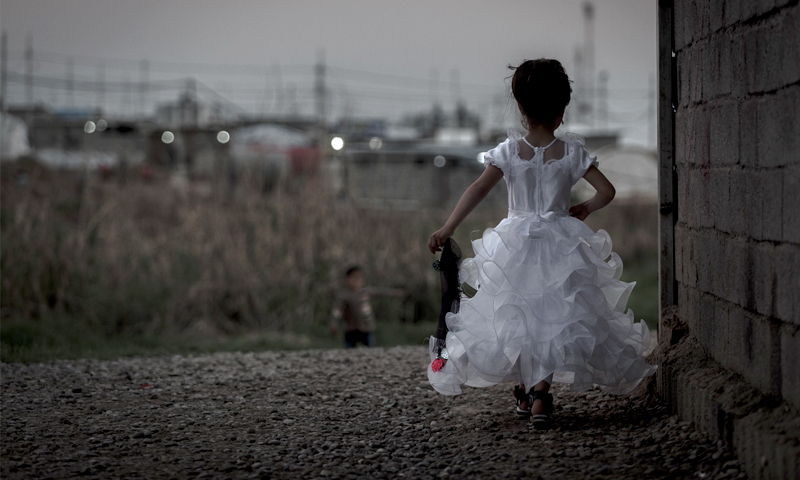
Arabs, Kurds, and the social ties that overcome political conflicts

Investigation Team – Enab Baladi
Differences between Arabs and Kurds in Northeast Syria have long played a role in keeping these groups from mingling with each other. Part of the reluctance stems from a fear of diluting their culture or somehow abdicating their nationalism. Another part is simply a refusal to change. Whatever the reason, these groups have seen their differences exacerbated by Bashar al-Assad’s regime, which used identity cards and preferential treatment to maintain distance between them.
However, a sort of peaceful resistance to decades of segregation began to emerge, notably in the form of marriage between Arabs and Kurds. The impact on these societies was manifested in images and colors of coexistence in the Syrian Jazeera, despite the unions being spontaneous and without political agenda.
Young people in this region of the country largely support marriage between Arabs and Kurds. Large-scale intermingling in Syria’s urban centers during the years before the Syrian revolution gave the youth in Al Hasaka province a desire to explore the other cultures around them. In fact, throughout Syria, this northeastern province exhibited the highest interest in neighborly interest.
As the frequency of these marriages increased, the bonds created by a common religion, frequent trade, and simple community affinity began to negate Assad’s laws of separation based on history, language, and political conflicts. Now, houses in Hasaka, Amuda, Qamishli, as well as nearby towns and small villages, can be heard speaking both Arabic and Kurdish languages, evidence that the natural ties between the two cultures are strong enough to survive the smoke of wars in the region, and to preserve a colored mosaic that refuses the smoke of wars in the northeastern of Syria.
Sham in Amuda…Love not obstructed by obstacles of nationalism and politics
Liwa Souliman waters small shrubs in a courtyard in Amuda, recalling days of his youth when he studied philosophy in Damascus. He speaks to his young daughter, “Sham,” first in Arabic and then in Kurdish, showing equal preference for each language.
Souliman, a young Kurdish correspondent for a local radio station in Amuda, chose to marry an Arab girl while he was in Damascus. Today, he lives with his wife and two children, Sham and Joud. It’s a life he says he built on love, far enough away from the ravages of war to prevent it from reaching his small house.
He told Enab Baladi “I named my daughter Sham after the city I am passionate about, Damascus, and where I spent 10 years and lived with my Arab wife. I studied philosophy at Damascus University and lived unforgettable moments in that city, before the war took me away from it.”
Prior the Syrian revolution, Amuda’s population was roughly 75,000, 95% of which were Kurds, with small numbers of Arabs and Christians sprinkled throughout. However, the city’s relatively small space and its rural nature created frequent opportunities cross-ethnic relations. These interactions in turn eroded the more nationalistic, isolationist tendencies, and gave space for natural human emotions grow into legitimate relationships. Indeed, recent years have seen dozens of young men and women in Amuda chose to marry ethnically diverse partners, further intertwining relationships between the different peoples of this city.
Liwa adds “I speak to my children in both languages, Arabic and Kurdish, and I try to have them speak using both languages.” His insistence comes from his passion for the Arabic language, which he calls “the richest encyclopedia,” but he is mindful of the practical opportunities this kind of bilingualism will afford his kids. “If one of my children wants to learn music in the future or has a desire to sing, Arabic offers the opportunity to blend and learn more in the field. It will also provide opportunities to participate in competitions of a larger scale.”
The bridges that families like Liwa’s are building have been noticed by others in the community despite the Syrian regime’s attempts to maintain distance between Arabs and Kurds, and despite cultural traditions that frown upon inter-ethnic marriage. More and more young Arabs and Kurds are breaking through the artificial barriers between them, setting aside their perceived differences and instead laying foundations based on mutual love and respect.
Another young Kurdish man, Kameran Khalil, considers marriage a basic human act that should not be restricted based on any sect, doctrine, or race, adding that “the world has overcome this phase even at the race level. We coexist here, as Arabs and Kurds, for hundreds of years. Such barriers should not be created out of racism.”
The Syrian revolution, which pulled Liwa away from his beloved Damascus and back to Amuda, renewed the hesitation to marry into a different group.
As a result of the fallout of the past five years, Syrian minorities began to fear backlash, even within their own communities. Social relations inside this previously welcoming region of the country began to adopt a more cautious form.
Aziza Khanafer, Joint President of the Interfaith Affairs in Hasaka, explains that minority elements of the Syrian community are now suffering from anxiety due to increased, deepening focus on the differences between them. He asserts that in recent years, marriage between Arabs and Kurds have dropped significantly as a result.
Khanafer’s point of view does not necessarily apply to many cases inside the Syrian Jazeera. Liwa, for example, the philosophy student from Damascus, separates his personal life from the political crisis, just like he separates his work as a reporter and the hours he spends with his family at home. On his personal time, he plays and talks to his children in two different languages, giving them the chance to absorb ideas of the value of humanitarian relationships against race and nationalism.
Liwa and his wife were able to embrace the concept of accepting others through freedom of expressing one’s opinions and political stands through the revolution, asserting “our personal views do not affect our lives, each of us retained his/her stand with no attempt to impose it on the other. It is something related to conviction, and neither of us can change the other’s conviction.”
Liwa wants to raise his children to have freedom of choice, as well as freedom in choosing their partners, hoping that “concepts of segregation would be diminished in the future,”
As he puts it, he will encourage them to overcome difficulties in case they choose to marry into a different ethnic group.
Liwa and his wife are hopeful about their children’s future, driven by the historical Arab-Kurdish ties in this region that bind tightly enough to withstand contemporary incidents. Thousands of people carry these ties, which belonging to both cultures through family.
A combination of races and religions uniquely found in the Syrian Jazeera
The Syrian Jazeera has been marginalized so thoroughly, particularly beginning with Baath in 1963, that even today it is a mysterious spot for many Syrians, despite the unique blending of cultures that make it a shining model for co-existence.
Hasaka province in northeast Syria includes most of the area considered the Syrian Jazeera, an area about 23 thousand square kilometers that was home to 1.5 million people before 2011.
The Syrian government divided Hasaka into four areas: Hasaka, Qameshli, Ras al-Ain (Sri Canet), Maalkieh (Derek) and 14 districts including: Amuda, Shadadi, Derbasye, Qahtaniye (Terbe sepi), Jawadieh, Yarwbieh (Tel Kojar).
Jazeera’s people come mostly from Arab, Kurdish, or Assyrian families. Arabs comprise the largest demographic and mostly reside in the city of Hasaka and its south and east countryside, with smaller concentrations in the north and west countryside.
Kurds are the second largest group, with thousands living in villages and towns to the north, northeast, and northwest countryside.
Assyrians live mostly in the north and northeast regions of Hasaka, especially in Tal Tamer but also in Qamishli and Malkieh.
The Syrian Jazeera also includes three different religion: Islam, Christianity and Yazidi, however with regional Arabs and Kurds both commonly adhering to Islam, that is the dominant faith in the province.
The region’s Christians come from the Assyrians, divided into Assyrians and Chaldeans, descending from the oldest cultures of the Middle East. According to historical sources, these are the first Christians in the world, according to historical sources.
Finally, the Yazidis are an amalgam of Persian, Islamic and Christian philosophies, and are represented as a minority among the Kurds. Yazidi villages are located in the far northeast of Jazeera, and their numbers, prior to the Syrian revolution, peaked at about 50,000 people.
Jazeera was almost completely out of the Syrian regime’s control, so much so that the Kurdish Democratic Union party declared a move to the rule of the “Self-Management” to form a core for a possible future federal region in Syria.
Amuda’s history of independence and acceptance
Amuda fought the French and rebelled against the Assad regime long before the revolution
A city in the province of Hasaka, Amuda is located in the far northeast of Syria, about 80 kilometers from the Turkish border. Nearly 160 villages comprise this city.
The history of the region dates back millennia. Archeologists excavating three hills near the city have found evidence of human civilization in Amuda going back 3000 years.
Even the name “Amuda” goes back far enough to be rooted in myth. Historical references circulate various stories, the most famous of which tells of the daughter of Mardin’s king, who ordered her son deported immediately after he was born. The man assigned the responsibility of taking the child away placed him on a column erected near the city. A passing convoy found the child and people circulated the story of the column and the child for so long that the area became known as “the column” or Amuda.
The population of Amuda before the Syrian revolution was around 75,000. After the revolution, and as a result of displacement in the city, the population dropped to almost 50,000.
The most prominent Kurdish clans in the region are the Umarieh, Kikan, Gholy and Tamki, however, tribal influence among the Kurds has declined significantly.
The prevailing Kurdish component in Amuda decreased marriages between Arabs and Kurds. One of the reasons behind the marriage between the city’s components was studying at Syrian universities by the young men and women.
Amuda has witnessed revolutionary movements in the last century, most notably the Kurdish tribal uprising against the French occupation led by Saeed Agha Dakori, which cost the city aerial bombardment by French aircraft in 1936. Each year, residents mark the anniversary of the attack during Amuda’s “Toshet” (clatter).
Again in 2004, people of Amuda rose up with others in the region to support demonstrators in Qamishli, a movement that saw the loss of seven Kurdish young men at the hands of Syrian security. The city was kept under the regime’s watch, at least until the rest of the country rebelled in 2011.
With the first sparks of the Syrian revolution, the young of Amuda again demonstrated against the Syrian regime, leading to the arrest of hundreds and the death of dozens more. Today, the city is under the Self-Management rule.
The young men and women of Hasaka, asked about marrying other ethnicities…What did they say?
The Syrian revolution has affected the Syrian youth in all different walks of life. It has also significantly changed their way of thinking, as, after the revolution, the young had diffused trends that shared their distance from the state of marginalization, and were directed to express themselves in many ways.
The revolution carried with it a desire to throw off social restrictions on the freedom of thought, work, marriage and other forms of self-expression, yet paradoxically the revolution also pushed many to hold on to social xenophobic patterns, fearing alienation by those close to them.
Rapidly evolving political shifts have placed the residents of the Syrian Jazeera in conflict on security, intellectual, and social levels. The thing that forced many young people to move from Al Hasaka province, as an alternative of adjusting with a community ruled by an emergent political management and almost constantly threatened of security danger.
And even though immigration seems to be a more obvious image of community escape, details of coexistence among different Kurdish communities have significantly been affected, which have been reflected in the decline in marriage between Arabs and Kurds, as Muslim components in Syrian Jazeera.
Enab Baladi polled some young views in Al Hasaka province in regards of marriage among different components. Enab Baladi sensed in the recorded videos the voices of a generation that found himself facing tough historical conditions, an emergency situation, as well as an unknown future.
Overt marriage supporters are largely male …Females are more cautious
Most of those polled by Enab Baladi, both males and females, welcomed the idea of marriage between Kurds and Arabs. Those who opposed to the idea justified their opinions by citing obstacles such as language and traditions.
The Kurdish young man, Sherwan Heso, says “love is how we overcome all obstacles,” and asserted that a loving relationship between two people of different ethnicities could actually present an ideal example within the community and lead to decreased impacts of discrimination.
On the other hand, the young Arab lady, Sial Mohammed, expresses a different opinion. Although she recognizes the importance of marriage between the two groups as a form of cultural integration and coexistence, she still believes that it might create many crises between the married couple on the long term.
The desire to break “the stereotype image” surrounded with fears
Another young Kurd, Manal Hasan, praises marriage between Arabs and Kurds because it breaks a stereotype, but she disputes the idea on a personal level due to “the existence of barriers.” Manal answered the question with another: “When two Kurdish people coming from different areas get married, problems relating to different environments occur. The same goes on in an Arab-Arab marriage of two different cities. How would a marriage of two different ethnicities succeed?”
Afdar Hasan, also Kurdish, believes that “polygamy among Arabs” is what scares a Kurdish girl most when marrying an Arab man, and that she won’t face the same problem if marrying a Kurdish man.
Humanity is above social differences
Moaz Al Hamad, from Qamishli, believes in the “positive” impacts that cross-cultural marriage has on the community of the Syrian Jazeera. He told Enab Baladi the many pros of such a marriage, especially since the community is originally based on people from both groups.
Another young man from Qamishli, Abdul Bari Massor, thinks that love between two individuals cannot be related to ethnicity, adding “If I fall in love with a girl, I am willing to give up many things in return of being with her. It is enough for me to be convinced to be with her for a lifetime.”
How did the Syrian revolution affect marriage between Arabs and Kurds?
Lawyer Khaled Ibrahim, also from Qamishli explains that marriage between Kurds and Arabs, as well as smaller minorities in the Syrian Jazeera, is only a few cases that differ from one area to the other, and from one social state to the other.
Ibrahim further explains that “marriage between Arabs and Kurds in northeast Syria is witnessing fewer cases, compared to Damascus and Aleppo, as a result of being an integrated society.”
He adds “in other, more ethnic regions, such as the Syrian Jazeera, traditions limit marriage among different groups.” The lawyer also says that revolutionary movement in Syria has contributed in a dramatic decline in the marriage cases for often political reasons.
Ibrahim believes that pros of marriage between Kurds and Arabs can be identified in coexistence and cooperation, while the cons are related to fear of diluting the majority population, which, in turn, could constitute a significant societal barrier.
On the other hand, the Joint President of the Interfaith Affairs in Hasaka, Aziza Khanafer, believes that cross-cultural marriage was widespread before 2004, until the outbreak of “Qamishli’s revolution” that led to “a deep rift between Arabs and Kurds in the Syrian Jazeera.”
And while the Arab-Kurdish relationship was recovering, allowing room for more marriages between the two, the Syrian revolution caused a relapse of tensions in the Syrian Jazeera, as put by Khanafer.
People will always turn to kinship as an escape from difficulty, and tend to congregate with people most like them, which makes breaking down walls itself a challenge. Marriage, however, represents an identifying image that dilutes political attempts to segregate mixed societies. It also lessens the impact of traditions that otherwise maintain segregation. For example, the Syrian Jazeera, through the hundreds successful marriages between Arabs and Kurds, and through the thousands of individuals, who carry names that belie the depth of their heritage.
Khal and “Krev”…A feature of coexistence between the Kurds and Arabs of Jazeera
Baz Al Bajari – a Syrian journalist
 Mohammad Jamal Barout, of the Arab Center for Research and Political Studies, traces the relationship between Kurds and Arabs back to the time before the arrival of Zengi (Imad ad-Din Zengi) and Ayyubid (a Muslim dynasty of Kurdish origin, founded by Saladin Ayyoubi) people to the Levant region.
Mohammad Jamal Barout, of the Arab Center for Research and Political Studies, traces the relationship between Kurds and Arabs back to the time before the arrival of Zengi (Imad ad-Din Zengi) and Ayyubid (a Muslim dynasty of Kurdish origin, founded by Saladin Ayyoubi) people to the Levant region.
Talking later on about the era of the French occupation of Syria, Barout says “the Kurds remained part of Syria. The Kurdish neighborhood in Damascus represented an attractive center for large Kurdish migrations from Diyarbakir,” adding “the Kurdish activist Ali Zolfo Agha was among the first who fought the colonizers and defended Syria.”
Tracing back origins of cultural contact between the two peoples, we find that the spread of Islam in the region had the largest impact on the Kurdish–Arabic convergence, since having the Quran as a constitution for Muslims all over the world, strengthened the cultural connections between Arabs and the other adherents of Islam, including the Kurds. The Islamic culture is inclusive of the cultural heritage for all societies and peoples who embrace Islam.
“Khal” (uncle) and “Krev” are among the most widely used expressions among the people of the Syrian Jazeera region, especially between Arabs and Kurds. The geographical overlap in many areas created a kind of bond between the two segments of the society. This bond was framed in two types of family relations; the first was intermarriage, where an Arab masters the Kurdish language despite the regime banning Syrians and Kurds from learning it. However, investigating that Arab’s individual’s family origins, you may find out that he has a Kurdish mother. In the same way, if you find a Kurd that speaks fluent Arabic, you might similarly find close Arab family ties. That was one of the forms of adaptation and intermingling in the neighborhood between two groups that have different language and traditions.
The desire among ethnic components of the Syrian Jazeera for greater connections was the root of another act of intermingling and coexisting between Arabs and Kurds. This was the process of circumcising a male baby sitting in the lap of someone from another family to create a bond between the two families under the name “Krev”; a Kurdish expression used in such cases. This expression was circulated among Arabs as well, who used it to express a prevalent tradition in the region.
As a result of these relations, a common culture grew among people of the region, as well as customs that influence inter-group relations. This was particularly true for the clans and the authority of both Arab and Kurdish tribal leaders, especially from the early 1900s until the 1980s. Marriages between children of tribal leaders were evidence of reconciliation after conflict, supplanting the urge for revenge that sprang from the bloody conflicts that generally governed the relations between tribes. For those seeking a way to end the bloodshed, marriage between members of the ruling tribal families were welcome.
These arrangements, however, did not please the Syrian regime. It continuously created rifts between the two groups through a racist approach towards the Kurds, under the name of belonging to “Al Baath Arab Socialist Party.” Assad gave Arabs privileges at the expense of the Kurds and made a policy of of Arabizing the names of Kurdish villages, such as Jaffa, Palestine, Haifa, and Jalek.
Additionally, the regime denied citizenship to thousands of Kurds until 2011, classifying them as foreigners, which not only minimized the possibility of Arab-Kurd unions but created a near full-blown caste system.
Indeed, we cannot present a case of coexistence between Arabs and Kurds as being perfect or void of any prejudices. However, there is precedent for peaceful intermingling between the two and reason to believe that, free of unscrupulous state meddling, the hundreds of Syrians who belong to two cultures and speak the languages of both cultures can aspire to a better future for their children that hold a Syrian citizenship.
if you think the article contain wrong information or you have additional details Send Correction
النسخة العربية من المقال
-
Follow us :
Most viewed
- Printing Syrian currency in Europe... A file on the table
- Complex steps to establish new Syrian army
- Books make a comeback in Damascus libraries after being banned under Assad
- National Security Council in Syria: A necessity imposed by reality
- SDF-Damascus agreement in Aleppo: A test balloon for broader consensus

















 A
A
A
A
A
A
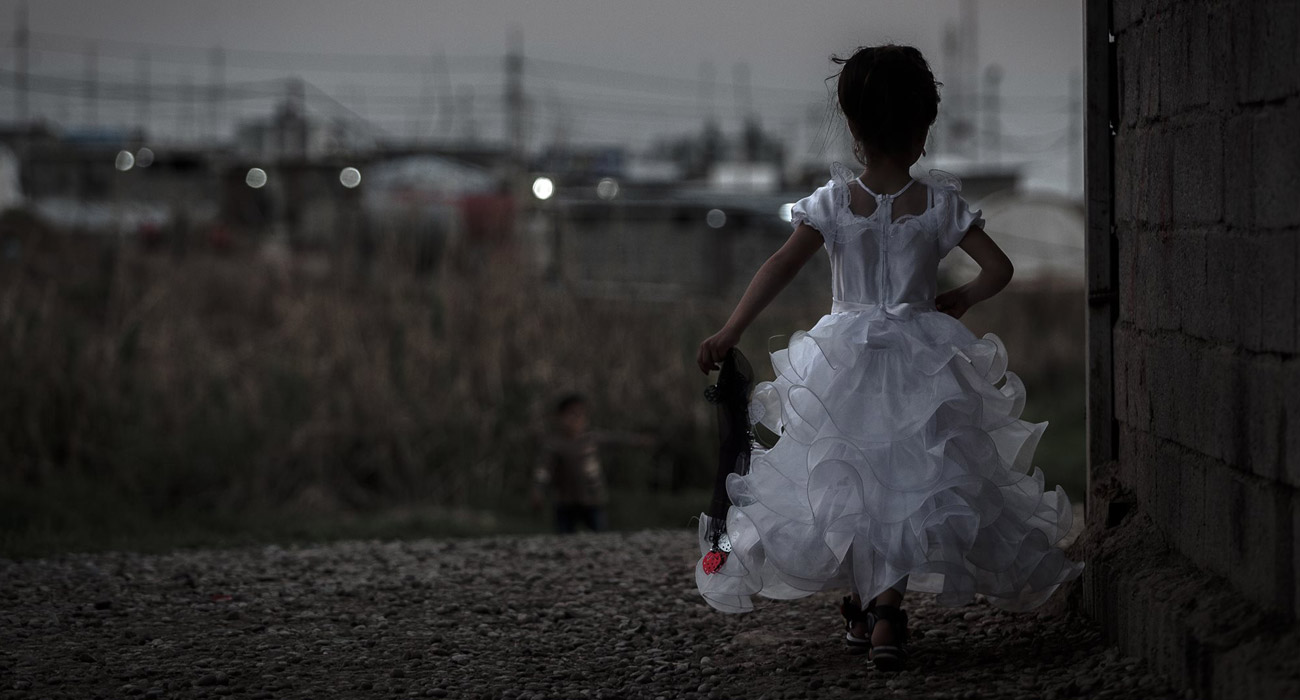
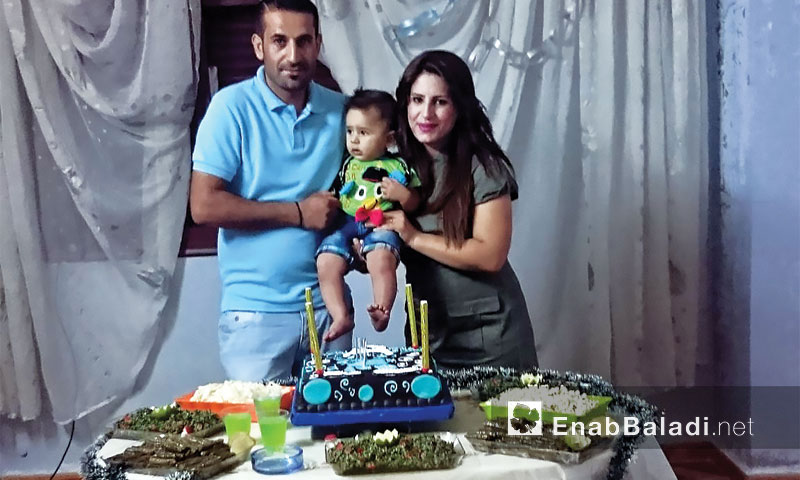


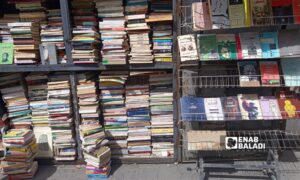
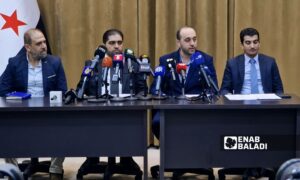
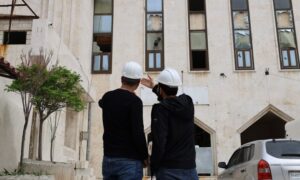
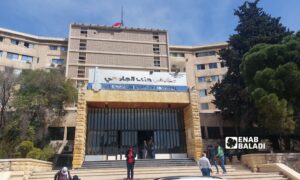
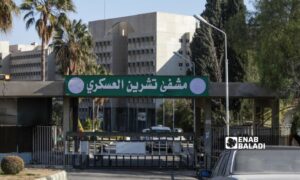
 More Society
More Society